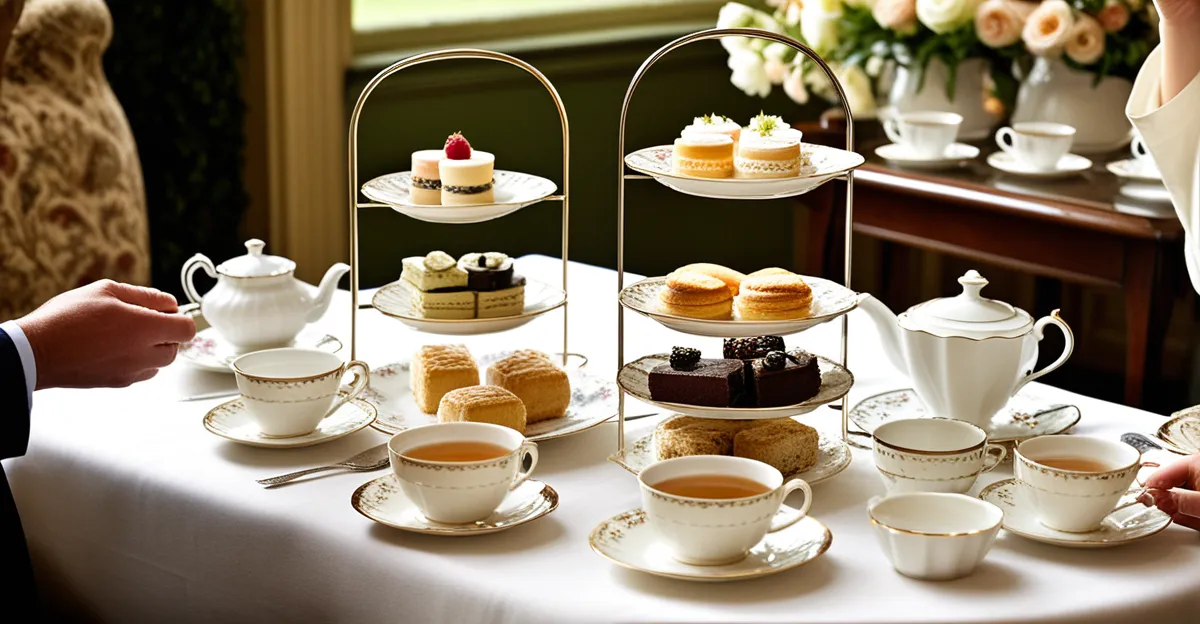The Historical and Cultural Significance of British Afternoon Tea
Afternoon tea history traces back to the early 19th century, attributed mainly to Anna, the Duchess of Bedford. Feeling hungry between lunch and dinner, she introduced a light meal featuring tea and small cakes. This simple practice swiftly evolved into a formal ritual embraced by British aristocracy. Over time, the significance of afternoon tea expanded beyond mere sustenance to become a refined social occasion.
British tea culture reflects a unique blend of tradition, elegance, and community. Afternoon tea became a symbol of hospitality and social refinement, often signaling status and taste. In Victorian society, it encouraged interaction and offered a pause to refresh amidst busy routines. The ceremony’s structure, from the precise pouring of tea to the layering of cakes and sandwiches, embodied core values such as grace, patience, and attention to detail.
In parallel : What are the steps to crafting a traditional toad in the hole?
Symbolically, afternoon tea represents more than a meal; it conveys comfort, courtesy, and connection. It anchors British identity by reinforcing shared customs and etiquette. The ritual fosters inclusivity, bringing people together to celebrate friendship and leisurely enjoyment. Ultimately, the British tea culture imbued afternoon tea with cultural weight that continues to resonate in contemporary settings.
Essential Elements of a Traditional Afternoon Tea Setup
A traditional afternoon tea setup is a carefully curated experience, marrying both visual appeal and culinary delight. The afternoon tea foods centerpiece typically includes delicate finger sandwiches, freshly baked scones accompanied by clotted cream and jam, and an array of petite cakes and pastries. These selections are not arbitrary; they reflect the traditional tea service customs that prioritize light, fresh, and elegantly presented fare, designed to complement rather than overpower the tea itself.
Also read : What are the secrets to perfecting a traditional English breakfast?
Tea etiquette plays a fundamental role in this ritual. Guests and hosts alike observe customs such as pouring the tea gently, often adding milk after the tea, and using fine bone china cups. The placement of utensils, the manner of holding the cup, and the pacing of the meal all speak to an underlying code of politeness that elevates the experience beyond mere refreshment. Mastery of this etiquette honors the significance of afternoon tea as a social and cultural event.
The importance of the setting cannot be overstated. Afternoon tea decor traditionally involves pristine linens, polished silverware, tiered cake stands, and fresh flowers to create an atmosphere of charm and elegance. Each element, from the tableware to the smallest decorative detail, contributes to a sense of occasion, reinforcing the ritual’s place within British tea culture. This attention to detail reflects the values of refinement and hospitality embedded in the tradition.
Enhancing Social Gatherings with Afternoon Tea
A close look at how afternoon tea fosters connection and inclusivity
The benefits of afternoon tea extend well beyond the enjoyment of food and drink; it plays a vital role in enhancing social gatherings by creating a welcoming, relaxed atmosphere. The structured yet gentle pacing of a traditional tea service naturally encourages guests to slow down and engage in meaningful conversation. This setting reduces social barriers, making interactions feel more comfortable and authentic.
Afternoon tea acts as a social catalyst by providing a shared focus through its ritualistic elements—the elegant pouring of tea, the passing of delicate afternoon tea foods, and adherence to polite tea etiquette. These customs help guests feel included and part of a collective experience, promoting a sense of belonging and warmth.
Moreover, afternoon tea is adaptable to a variety of occasions, from casual group interactions to more formal celebrations. Its inclusive nature means it can bring together diverse groups, encouraging dialogue and connection. For example, afternoon tea parties often serve as an ideal centerpiece for family gatherings, club meetings, or even workplace socials, helping forge bonds through shared tradition and conviviality.
Tips for Hosting an Authentic and Memorable Afternoon Tea
Hosting a successful afternoon tea party requires thoughtful preparation and attention to tradition. Begin by selecting a menu that balances classic afternoon tea foods such as finger sandwiches, scones with clotted cream and jam, and a variety of delicate pastries. Pair these with quality tea blends, keeping the brewing method simple yet effective to highlight the tea’s flavour.
Setting the scene is vital: use fine china, polished cutlery, and crisp linens to emulate the elegance associated with traditional tea service. Incorporating subtle decorative touches like fresh flowers enhances the ambiance without overshadowing the ritual’s simplicity. Adhering to proper tea etiquette during service—pouring tea correctly and serving in the proper sequence—will impress guests and honor the cultural significance of the occasion.
When planning for various group sizes, arrange seating to promote conversation and sharing. For more informal gatherings, consider creative themes or modern twists on classic dishes, ensuring they complement rather than disrupt the traditional framework. Anticipate common challenges such as timing and dietary restrictions by preparing components in advance and offering alternatives, maintaining the welcoming and relaxed atmosphere crucial to the benefits of afternoon tea.






